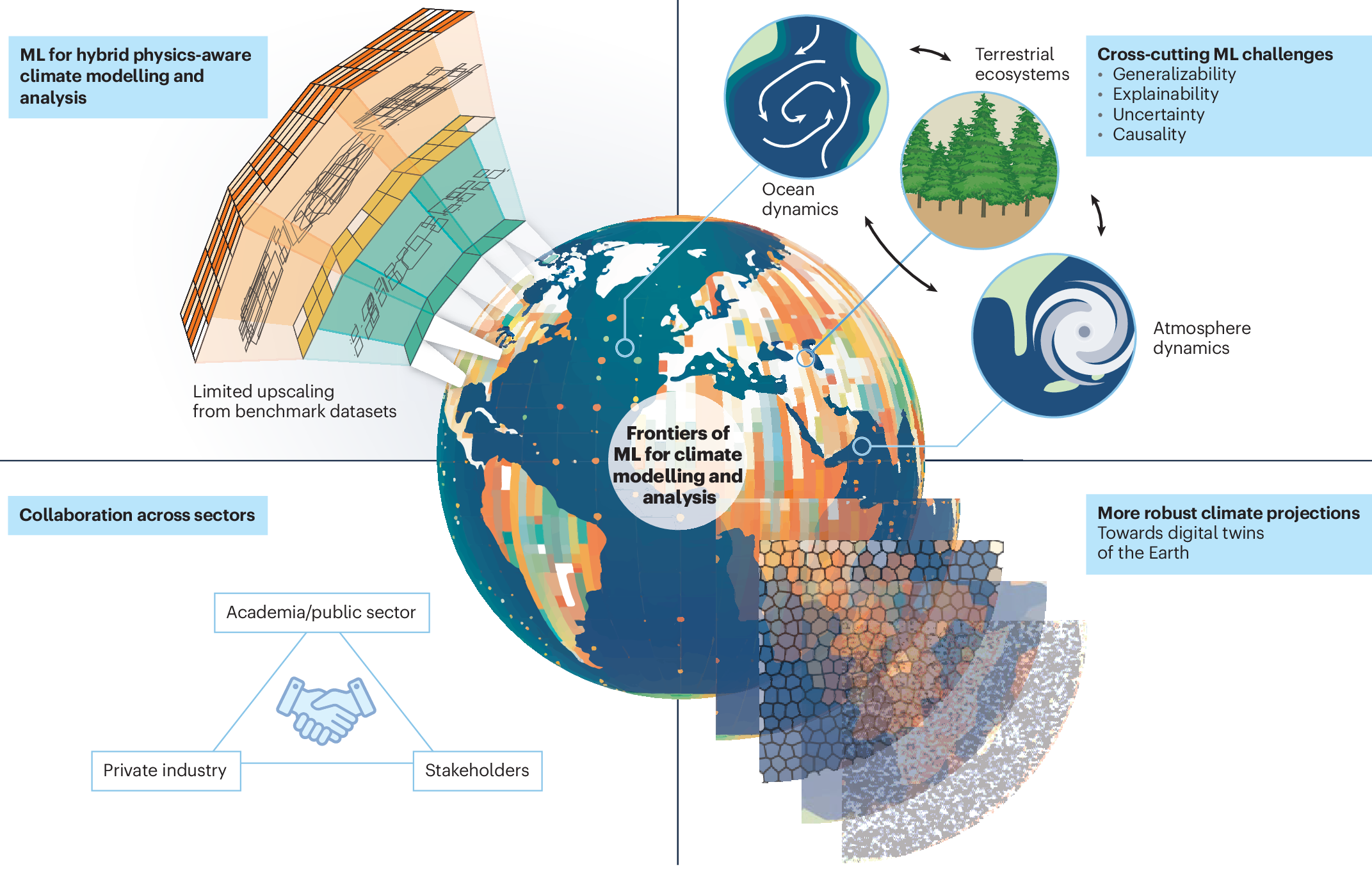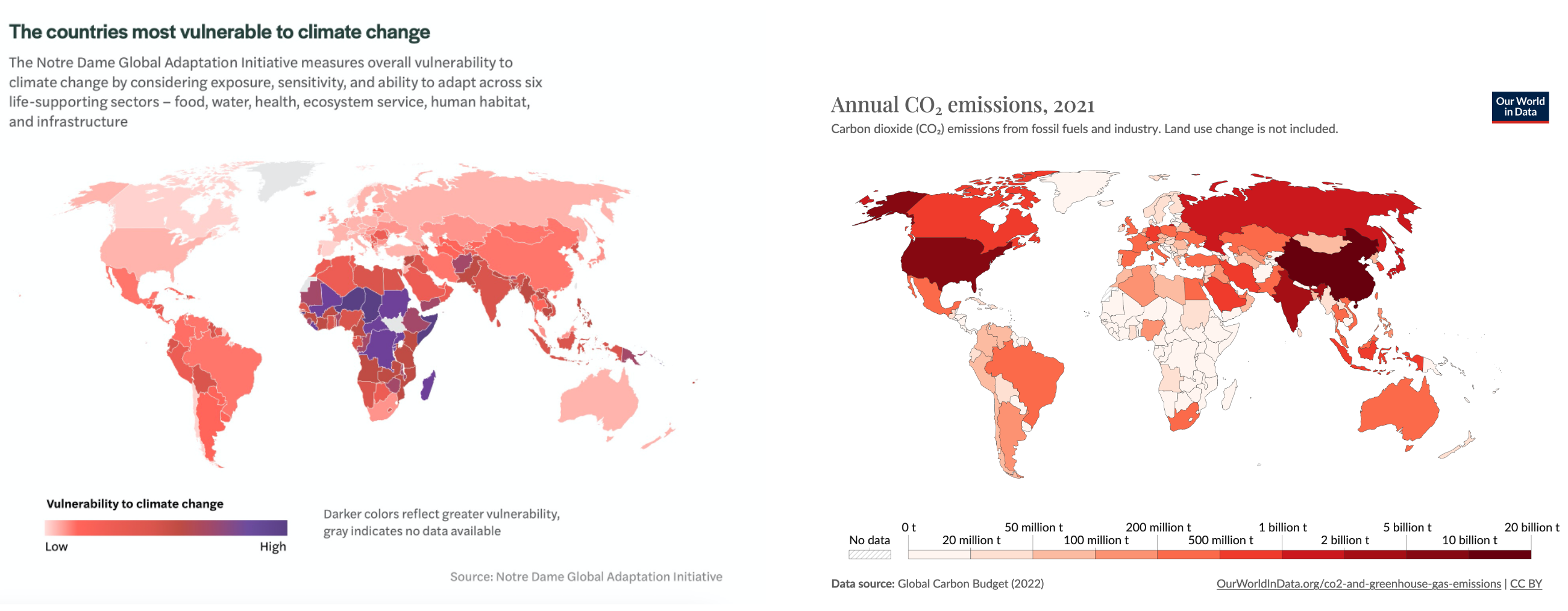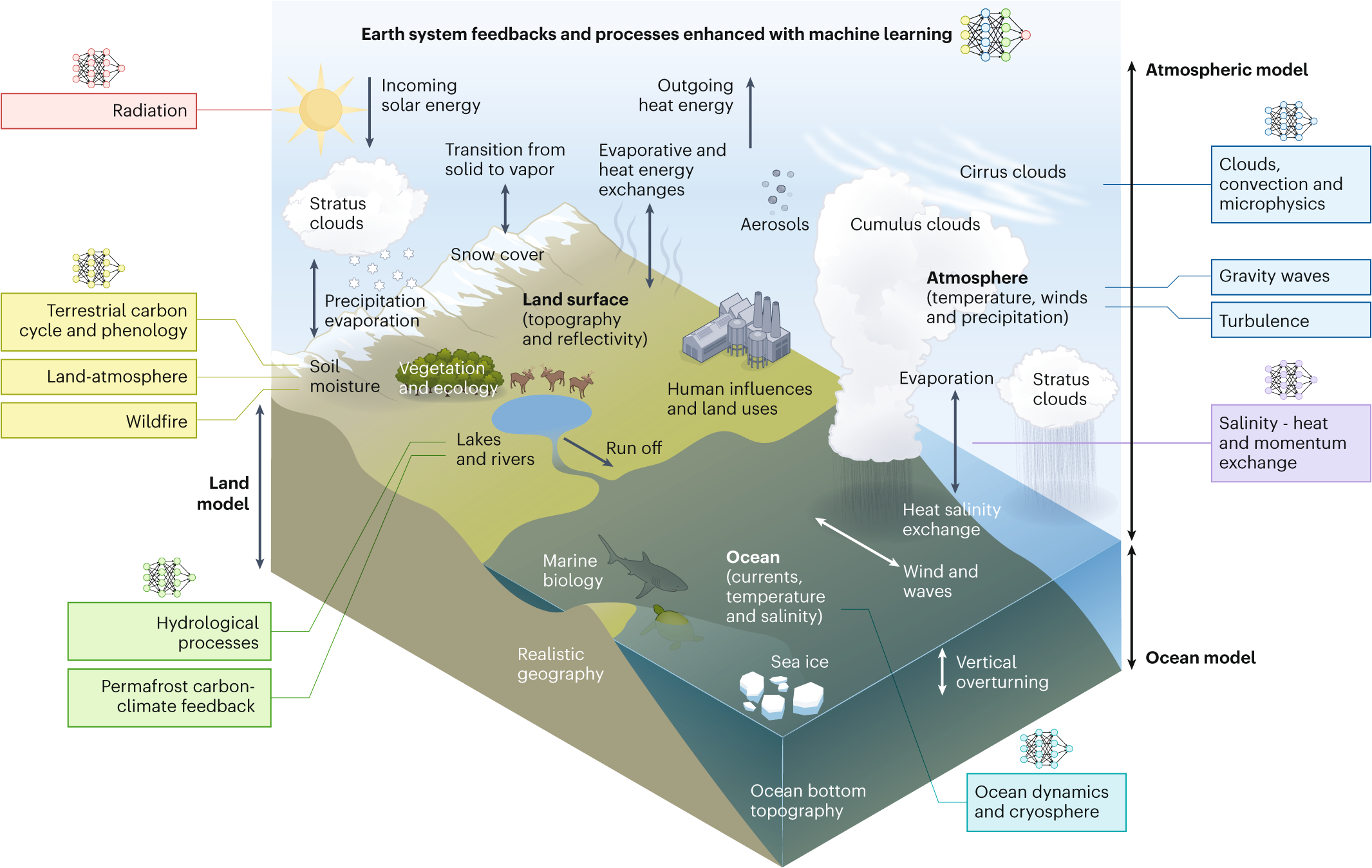Raise Your Grades: 10 Student AI Strategies for 2025 Success



Our planet faces big challenges. Climate change is happening faster than ever before. Storms are getting stronger, ice is melting, and seasons are changing. How do we keep track of all these changes? How do we protect our environment? The answer might surprise you – artificial intelligence (AI).
AI is like a super-smart helper that can look through mountains of information really fast. It can find patterns and make predictions that humans might miss. When we use AI to look at climate data, we unlock new ways to understand and protect our world.
A 3-minute podcast exploring how artificial intelligence is revolutionizing climate action, from improving weather predictions to optimizing renewable energy and protecting ecosystems.
Climate data comes from many places – weather stations, satellites, ocean buoys, and even your smartphone's weather app. Without AI, making sense of all this information would take too long.
By the time we understand what's happening, it might be too late to act. But with AI, we can process this data in real-time, see how the climate is changing right now, and make better plans to protect our planet.
Did you know? According to recent studies, AI has helped researchers achieve 89% to 99% accuracy in identifying tropical cyclones, weather fronts, and atmospheric rivers. This level of accuracy was almost impossible just a decade ago!

Modern AI approaches to climate modeling and data analysis. Source: Nature Climate Change
AI-powered satellites, drones, and sensors are gathering climate data with incredible precision, monitoring everything from temperature changes to air quality in real-time.
AI is making weather forecasting more accurate than ever, helping communities prepare for storms, droughts, and other extreme weather events.
AI helps track forests, wildlife, and ocean health. It can spot problems like illegal logging or endangered species before it's too late to save them.
Modern AI tools are transforming how we collect climate data. Satellites equipped with AI can now analyze images of Earth and detect tiny changes that might signal trouble. Drones fly over forests and oceans, gathering information that helps scientists track the health of our planet.
These AI systems work 24/7, collecting data in places too dangerous or remote for humans to reach. They can spot early warning signs of environmental changes, giving us time to act before small problems become big ones.

Predicting the weather has always been hard. But AI is making it easier and more accurate. Machine learning models can look at historical weather data and find patterns that help predict future conditions.
For example, Google's DeepMind AI has improved the accuracy of rainfall predictions by analyzing radar data. These predictions help farmers plan better and cities prepare for floods or droughts. AI models can also predict long-term climate trends, showing us how the planet might change over the next decades.
This information is vital for making smart decisions about where to build homes, how to grow food, and how to protect vulnerable communities.
Our planet's ecosystems – forests, oceans, grasslands – are under threat. AI helps protect them by keeping watch over vast areas that would be impossible to monitor manually. For instance, Space Intelligence uses AI to map forests from space.
Their technology can identify illegal logging activities and track how much carbon is stored in forests. This helps countries protect their natural resources and fight climate change. In the oceans, AI helps track coral reef health, monitor fish populations, and detect pollution. All this information helps us protect these vital ecosystems before it's too late.

Clean energy from sun and wind is key to fighting climate change. But these energy sources depend on the weather, which can be unpredictable. AI helps solve this problem by making renewable energy more reliable.
AI systems analyze weather patterns to predict how much solar and wind power will be available. They help energy companies decide when to store extra energy and when to use it. This makes renewable energy more dependable and cost-effective.
For example, IBM's "Deep Thunder" AI system provides hyper-local weather forecasts that help optimize renewable energy production. The more we can rely on clean energy, the less we'll need fossil fuels that harm our planet.
Every company, home, and individual has a "carbon footprint" – the amount of greenhouse gases they put into the air. AI helps track these footprints and find ways to reduce them. AI tools can analyze data from factories, buildings, and transportation systems to spot energy waste.
They suggest changes that save money and help the environment at the same time. According to a World Economic Forum report, businesses using AI to monitor their carbon footprints can reduce emissions by 5-10% while also improving their bottom line. It's a win-win solution!
Feeding the world's growing population without harming the environment is a huge challenge. AI helps farmers grow more food while using less water, fertilizer, and pesticides. AI-powered drones and satellites can check crop health from above.
They spot problems like pests or drought stress before they become serious. This helps farmers use just the right amount of water and chemicals, exactly where they're needed. In indoor farming, AI controls lighting, temperature, and water to create perfect growing conditions.
This uses up to 95% less water than traditional farming while growing food closer to where people live, cutting down on transportation emissions.
Cities produce most of the world's carbon emissions. AI helps make cities greener and more sustainable. It analyzes traffic patterns to reduce congestion and pollution. It helps plan bike lanes and public transit to give people alternatives to driving.
AI also helps design energy-efficient buildings that stay cool in summer and warm in winter with less electricity. It can even help plan where to plant trees to provide the most shade and clean air. For example, Sipremo, a company in São Paulo, Brazil, uses AI to help cities prepare for climate disasters and become more resilient to extreme weather events.
Their tools help city planners make smarter decisions about infrastructure and emergency services.
Clean water is becoming scarce in many parts of the world. AI helps manage this precious resource more wisely. It predicts droughts and floods, monitors water quality, and finds leaks in water systems. AI systems analyze data from sensors in rivers, lakes, and water pipes.
They spot pollution problems quickly so they can be fixed before people get sick. They also help water utilities save water by finding and fixing leaks faster. In agriculture, AI helps farmers use "precision irrigation" – giving crops exactly the water they need, when they need it. This can reduce water use by up to 30% while still growing healthy crops.
When natural disasters strike, AI helps save lives and reduce damage. It analyzes weather data to predict hurricanes, floods, and wildfires days or even weeks in advance. This gives people time to prepare or evacuate.
During disasters, AI helps emergency teams decide where to send help first. It analyzes social media posts, satellite images, and other data to find the hardest-hit areas. After disasters, AI helps communities rebuild in smarter, more resilient ways. It identifies areas at risk of future disasters and suggests changes that will keep people safer next time.
Making good environmental policies requires good information. AI helps policymakers understand complex climate data and see the likely results of different policy options. AI models can show how different choices – like carbon taxes, renewable energy incentives, or forest protection laws – might affect the environment and the economy.
This helps leaders make more informed decisions. These models also help track whether policies are working as intended. If they're not, AI can suggest adjustments to get better results.

Climate vulnerability visualization showing impact across different regions (Source: IPI Global Observatory)
Google used their DeepMind AI to analyze data from thousands of sensors in their data centers. The AI found patterns and made recommendations that reduced cooling energy use by 40%. This saved not only electricity but also millions of gallons of water used for cooling.
According to Google's own report, "The AI system was able to consistently achieve a 40 percent reduction in the amount of energy used for cooling, which equates to a 15 percent reduction in overall PUE overhead after accounting for electrical losses and other non-cooling inefficiencies." This same approach could be used in other energy-intensive industries, leading to significant reductions in electricity use and carbon emissions worldwide.
Microsoft's AI for Earth program provides technology, resources, and expertise to organizations working on environmental challenges. One of their projects helps track endangered species using AI to analyze camera trap images.
Traditionally, researchers had to manually look through thousands of photos to find images of rare animals – a process that could take months. With AI, the same work can be done in hours, allowing for faster and more effective conservation efforts.
The program has supported over 700 projects in 80+ countries, helping protect endangered species, improve agricultural practices, and monitor climate change impacts around the world.
In Africa, the IKI Project uses AI to help communities adapt to climate change. The project uses AI to predict local weather patterns, helping farmers make better decisions about when to plant and harvest crops.
It also helps local officials plan for extreme weather events and improve infrastructure to be more resilient. By combining traditional knowledge with AI-powered predictions, communities can better protect themselves from climate impacts.
This approach is especially valuable in regions where climate change is already causing severe problems like drought, flooding, or unpredictable growing seasons.
While AI helps fight climate change, it also uses a lot of energy. Training large AI models requires powerful computers that consume electricity and produce heat. This creates a carbon footprint that we can't ignore. According to recent research, data centers (where most AI systems run) contribute between 2.5% and 3.7% of the world's carbon emissions.
As AI use grows, so will this energy demand. The good news is that many tech companies are working to make AI more energy-efficient and power their systems with renewable energy. Google, Microsoft, and others have pledged to make their operations carbon-neutral or even carbon-negative in the coming years.
AI is only as good as the data it learns from. In many parts of the world, climate data is limited or low-quality. This makes it hard for AI to make accurate predictions for these regions. There's also a "digital divide" between wealthy and developing nations.
Countries with limited resources may not have access to the advanced AI tools and datasets available to richer countries. This creates an uneven playing field in the fight against climate change. Organizations like the UN Environment Programme's World Environment Situation Room are working to make high-quality environmental data available to everyone, but more work is needed to bridge this gap.
AI systems can inherit biases from their training data or from the humans who design them. This can lead to unfair outcomes, especially for disadvantaged communities. For example, if AI systems are trained mostly on data from wealthy urban areas, they might not work well for rural or low-income communities.
This could lead to environmental policies that benefit some groups while harming others. It's important to design AI systems with input from diverse stakeholders and to regularly check them for bias. The goal should be AI that helps everyone, not just those with power and privilege.
Important note: While AI is a powerful tool for environmental protection, it's not a silver bullet. We still need strong climate policies, individual action, and systemic changes to truly address the climate crisis. AI is one piece of the puzzle, not the whole solution.
The next generation of AI will be even more powerful in fighting climate change. Quantum computing combined with AI could solve complex climate models that are beyond today's capabilities. These models could give us unprecedented insight into how our climate works and how it will change.
Edge AI – artificial intelligence that runs on devices like smartphones or sensors rather than in the cloud – will make climate monitoring more widespread and affordable. This could help close the data gap in developing regions.
Climate Change AI, a group of leading researchers, is working to build a complete "wish list" of datasets that would advance global AI solutions for climate change. With better data, AI solutions will become even more effective.
For AI to reach its full potential in fighting climate change, the tools must be available to everyone – not just wealthy countries or big corporations. Several initiatives are working to make this happen:
As these initiatives grow, more communities will be able to use AI to address their specific climate challenges.
The real power of AI comes when it's combined with other technologies. For example:
These combinations will create new possibilities for environmental protection that we're just beginning to imagine.

Diagram showing AI-empowered modeling approaches (Source: Nature)
You don't need to be a data scientist to use AI for environmental protection. Here are some tools anyone can use:
Community science (also called citizen science) lets regular people contribute to scientific research. Many of these projects now use AI:
Want to learn more about AI and climate change? These resources can help:
As AI continues to evolve, its role in environmental protection will only grow. By understanding these technologies and using them wisely, we can build a more sustainable future for our planet. Remember – AI is a tool, not a solution by itself.
The true power comes when human creativity, compassion, and determination work alongside AI to create the change our world needs.
Huntingford, C., Jeffers, E. S., et al. (2019). "Machine learning and artificial intelligence to aid climate change research and preparedness." Environmental Research Letters.
Chen, L., Chen, Z., et al. (2023). "Artificial intelligence-based solutions for climate change: a review." Environmental Chemistry Letters.
Climate Change AI - A global non-profit that catalyzes impactful work at the intersection of climate change and machine learning.
Can AI Help Solve the Climate Crisis? - TED Talk by Sims Witherspoon exploring real-world examples and future possibilities.
Start by exploring the tools and resources mentioned in this guide. Your journey into using AI for good begins now!
AI helps by analyzing huge amounts of information much faster than people could. It finds patterns in weather records, satellite images, and sensor readings to help scientists understand climate change better and make more accurate predictions.
Yes, AI is getting much better at predicting extreme weather like hurricanes, floods, and heatwaves with high accuracy. This gives people more time to prepare and can save lives and property.
AI makes renewable energy more reliable by predicting when and where the sun will shine or wind will blow. It also optimizes energy storage and distribution, so we waste less electricity and can rely more on clean energy sources.
Yes, AI systems do use energy. However, the environmental benefits of using AI often outweigh this energy cost. Many tech companies are also working to power their AI with renewable energy and make their systems more efficient.
Many AI climate tools are designed for everyone! Apps like iNaturalist use AI to help you identify plants and animals, and websites like Earth Nullschool show real-time climate data. You can also join citizen science projects where AI helps analyze the data you collect.
Comments
Post a Comment